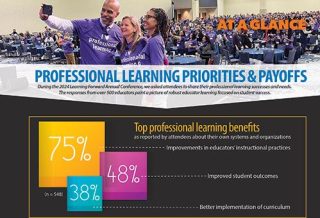FOCUS
Steps to self-reliance
Coaching process strengthens math students' confidence
By Sue Chapman and Mary Mitchell
Categories: Coaching, Data, ImplementationDecember 2019
Vol. 40, No. 6
Read the remaining content with membership access. Join or log in below to continue.
Sed ut perspiciatis unde omnis iste natus error sit voluptatem accusantium doloremque laudantium, totam rem aperiam, eaque ipsa quae ab illo inventore veritatis et quasi architecto beatae vitae dicta sunt explicabo. Nemo enim ipsam voluptatem quia voluptas sit aspernatur aut odit aut fugit, sed quia consequuntur magni dolores eos qui ratione voluptatem sequi nesciunt. Neque porro quisquam est, qui dolorem ipsum quia dolor sit amet, consectetur, adipisci velit, sed quia non numquam eius modi tempora incidunt ut labore et dolore magnam aliquam quaerat voluptatem.
References
Black, P. & Wiliam, D. (2010, September). Inside the black box: Raising standards through classroom assessment. Phi Delta Kappan, 92(1), 81-90.
Hattie, J. (2012). Visible learning for teachers: Maximizing impact on learning. Thousand Oaks, CA: Corwin.
Huinker, D. & Bill, V. (2017). Taking action: Implementing effective mathematics teaching practices. Reston, VA: National Council of Teachers of Mathematics.
Killion, J. (2008). Assessing impact: Evaluating staff development. Thousand Oaks, CA: Corwin.
National Council of Teachers of Mathematics. (2014). Principles to actions: Ensuring mathematical success for all. Reston, VA: Author.

Sue Chapman (chapmans@uhcl.edu) is an adjunct instructor at the University of Houston-Clear Lake and a professional learning consultant at Math Solutions.
Mary Mitchell (mmitchell@mathsolutions.org) is a lead instructional designer at Math Solutions.
Categories: Coaching, Data, Implementation
Recent Issues
CURRICULUM-BASED PROFESSIONAL LEARNING
October 2024
High-quality curriculum requires skilled educators to put it into...
LEARNING TO PIVOT
August 2024
Sometimes new information and situations call for major change. This issue...
GLOBAL PERSPECTIVES
June 2024
What does professional learning look like around the world? This issue...
WHERE TECHNOLOGY CAN TAKE US
April 2024
Technology is both a topic and a tool for professional learning. This...











